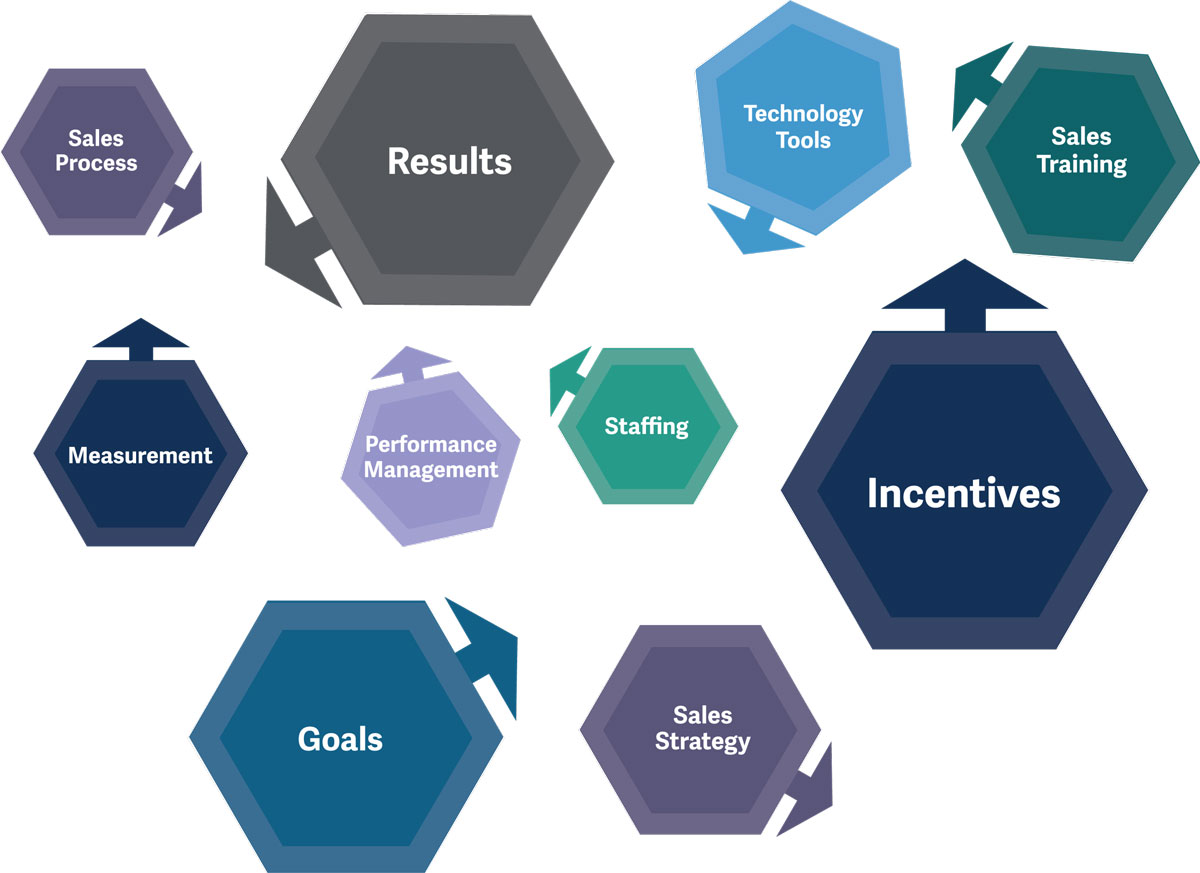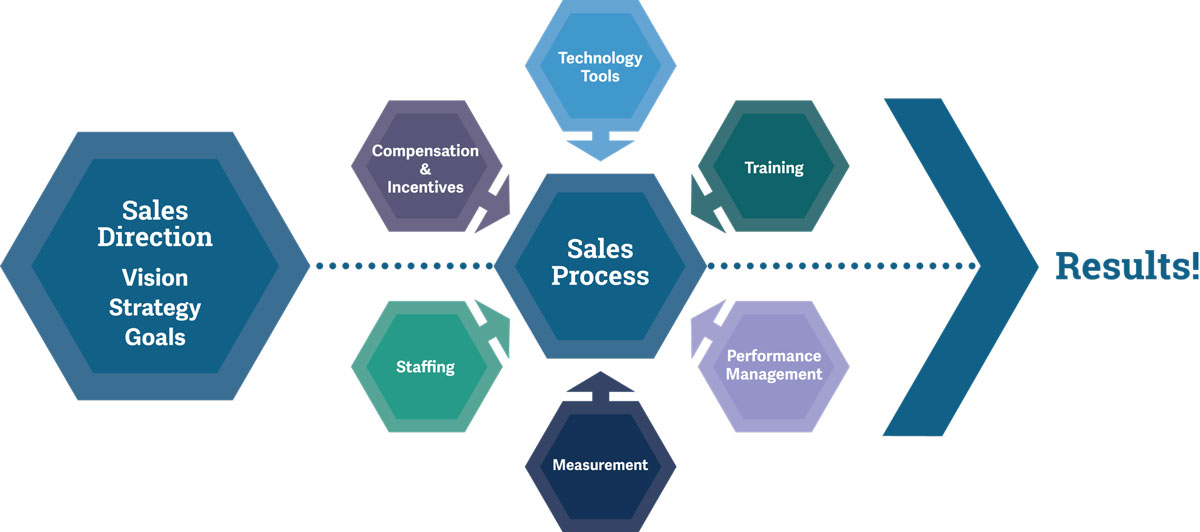Certain things are fairly predictable in the sales world. One is that sales leaders are expected to raise their performance every year. Another is that they’ll likely resort to the same familiar methods they’ve used in the past to try to achieve that improvement.
These tried–but not necessarily true–approaches include communicating a new strategy, changing an incentive program, utilizing the latest and greatest technology sales tools, adding more sales training, and modifying sales metrics. While they all have their place in raising sales performance, most sales leaders don’t get the most out of them.
Why is it that some sales managers achieve breakthrough from these methods while others wallow in mediocrity? Ultimately, it comes down to whether or not they’re incorporated as part of an integrated and focused approach.
Mediocre sales performance is the predictable outcome when:
- You’re using stand-alone solutions, such as incentives or sales training, without thinking about the big picture. These tools may–or may not–actually help you create behaviors that are in line with your strategy, vision or goals. Without deliberate thinking about how it all fits together, there will be an element of randomness in what is accomplished.
- The solutions employed are not tied to the sales process. When there is no connectivity to the sales process, there is no way to ensure that sales behaviors will work in conjunction with each other to produce the desired results. For example, sales training and incentive programs may be in sync with each other, but if they’re not connected to the greater sales process, they will be less effective in producing the behaviors that truly matter most.
- The solutions you’re using are seen as tasks to be completed rather than instruments that produce increased focus, motivation, and accountability to help execute critical sales behaviors. For example, mandating that salespeople enter information into the CRM system that has nothing to do with helping them better execute their sales activities becomes a mere “checklist to do” and perceived time waster.
In contrast, superior, breakthrough-level sales performance occurs when:
- The sales organization’s vision, strategy, and goals are aligned to provide clarity on what sales behaviors matter most.
- The sales process contains the high-impact sales behaviors most integral to bringing the vision and strategy into execution, generating the desired results.
- All organizational systems, tools, programs, and processes fuel the sales process by supporting appropriate high-impact sales behaviors.
Sales transformation is challenging, even when it’s set up for success. But it’s nearly impossible when there’s a lack of clarity and focus within the sales process, and when there is poor integration of all programs, processes and tools. Before investing more time or dollars, ask yourself these questions to see if you’re truly set up for success:
- Does your sales process prioritize the sales behaviors that matter most?
- Do your programs, tools, and processes support execution of the prioritized sales behaviors?
If you want to learn more about preparing for sales transformation, please contact us at info@businessefficacy.com or at 952.217.0425.


